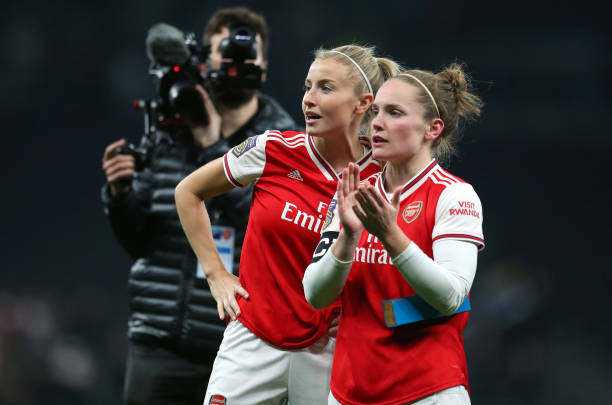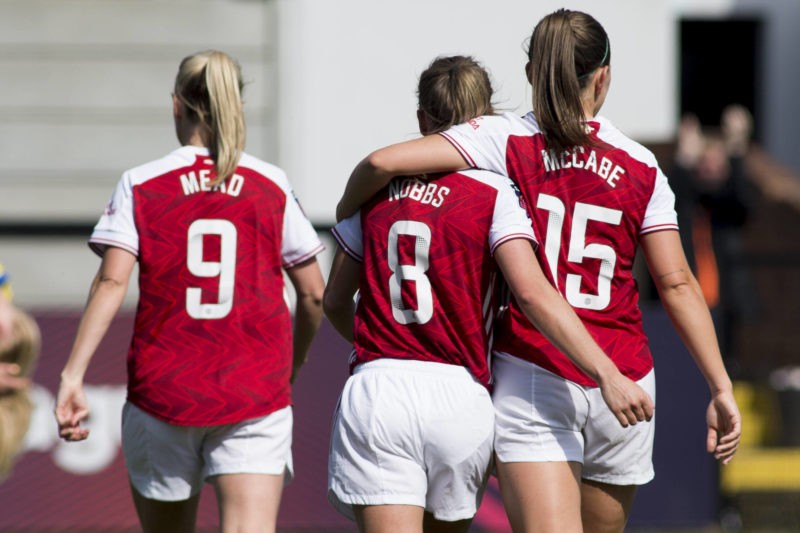There is a lot of talk about an FA WSL salary cap at the moment and why it should be removed or changed.

Arsenal currently use a loophole to get round the current salary cap and the top three sides certainly pay more than 40% of their official turnover in wages.
In recent weeks, we have seen many articles on the subject in the Times, the Guardian and the Athletic. It is certainly a hot topic.
So what do the numbers say?

Arsenal Women’s turnover is about £350,000 and, therefore, the salary cap wages should be £140,000.
In the meantime, we have learnt from the clubs accounts that additional operating costs of £2,014,000 were borne by the parent company.
So, let’s imagine Arsenal were adhering strictly to the salary cap rules.
They would have £140,000-per-year to pay their players.
The club has 22 professional players on their books at the moment. That would mean, if they were paid equally, the grand sum of £6,363-per-year or, if you prefer your wages in weekly amounts, £122. 4
Who can really survive on that kind of money in London? Do people really want the women’s football teams to pay that kind of money?
Now, I understand the arguments from fans of ‘poorer’ teams who do not have the backing of a rich men’s club or are independent. It is an unfair competition. Those clubs who abide by the salary cap rules have absolutely no chance of being competitive.
It is clearly an uneven playing field, but football has always been that way, rightly or wrongly.
And, to be clear, if this rule was enforced properly, a lot of players would leave the country and ply their trade in different leagues. Being paid £600 a month as a full-time professional is genuinely not fair.
To have a competitive squad at the top level, according to the current rules, a club would need a turnover of around £5,000,000. That budget would make provide a wage-allowance of £2,000,000 and for a squad of 20 an annual wage of £100,000 or £8,333 per month (£1,923pw).
To come up with that £2m-yearly-wage estimate, I estimated 20 players wages, with annual salaries between £12k and £300k depending on the player. I believe that accurately reflects the women’s football pay-rate in the current FA WSL market.
Now, which women’s football clubs can boast £5m in turnover? Not one in England.
The FA asking all clubs to turn full-time professional but also to follow a strict salary cap is just absurd. It is not possible to do both properly.
Minimum wage in the FA WSL is something that the FA should take care of as mentioned by Molly from the Times.
Personally, I would like to see a minimum wage increased (not just the current one that is professional football). Rather than limit the top, at least make pro football worthwhile for bottom as at mo some players in Champ earn more with jobs and small PT ⚽️wage than if joined WSL https://t.co/OAaCb5Al9n
— Molly Hudson (@M0lly_Writes) December 20, 2019
During the summer, I heard about a couple of players in the FA WSL who had to move home to live with their parents because of the low wages paid by their club.
How can you call it professional football when players can actually earn more money doing a normal job than being a pro footballer?
There is no doubt that fully removing the cap will lead to a bigger gap between the top 4 teams (Arsenal, Man City, Man Utd and Chelsea) and the rest of the FA WSL. The big teams will manage to sign the best players by paying bigger wages.
This is, of course, pending Brexit that will certainly change the appeal of EU/EEA players as they will loose the freedom of movement.
The FA WSL is at a crossroads. The FA have decided to make the FA WSL the #1 global women’s football league ahead of the NWSL by launching the FA player and broadcasting all the games to the world.

But they cannot achieve this goal by preventing the clubs acquiring top talent.
There is no doubt that sustainability is the biggest problem for clubs that are backed by their parent club’s money and the cap was in place to prevent the numerous collapses we saw in the past.
The fact that the FA went for the single business model making collateral damages like Yeovil, Doncaster Belles, Sunderland or Watford, for example, shows the future is really unclear and many other clubs might wind down in the near future as they struggle to finance and compete against the big money clubs.
Is there a way to find a balanced rule to protect all the clubs “big” and “small” ones?
Let’s hope the FA can find a solution that satisfies everyone, but I am not sure it exists.

